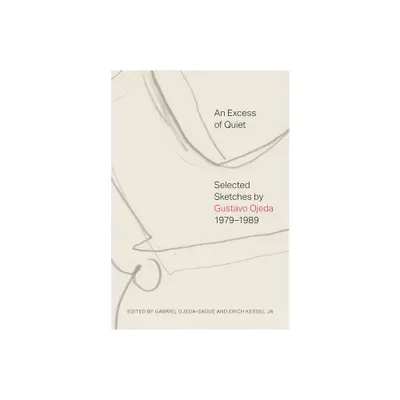Home
An Excess of Quiet: Selected Sketches by Gustavo Ojeda, 1979-1989
Loading Inventory...
Barnes and Noble
An Excess of Quiet: Selected Sketches by Gustavo Ojeda, 1979-1989
Current price: $24.00


Barnes and Noble
An Excess of Quiet: Selected Sketches by Gustavo Ojeda, 1979-1989
Current price: $24.00
Loading Inventory...
Size: OS
*Product Information may vary - to confirm product availability, pricing, and additional information please contact Barnes and Noble
A revelatory trove of Gustavo Ojeda’s previously unseen 1980s drawings of New Yorkers in motion
Cuban American painter Gustavo Ojeda (1958-89) was known primarily for his lush and meditative urban nightscapes, which brought him notoriety in the 1980s downtown New York art scene. He exhibited alongside artists such as Jean-Michel Basquiat, Keith Haring and David Wojnarowicz, before dying from AIDS-related complications in 1989, just two weeks shy of his 31st birthday.
Ojeda's paintings were notably unpopulated; in his private sketches, however, Ojeda fixated on the people of New York, filling thousands of pages with disembodied faces, the bodies of sleeping people riding public transportation and on the street.
In the margins of his sketchbooks, Ojeda often wrote that he felt anxious about his productivity, shaming himself for not being able to paint more.
An Excess of Quiet
answers Ojeda’s worries with the recovery of what was always right in front of him, his most obsessive and tender practice.
Cuban American painter Gustavo Ojeda (1958-89) was known primarily for his lush and meditative urban nightscapes, which brought him notoriety in the 1980s downtown New York art scene. He exhibited alongside artists such as Jean-Michel Basquiat, Keith Haring and David Wojnarowicz, before dying from AIDS-related complications in 1989, just two weeks shy of his 31st birthday.
Ojeda's paintings were notably unpopulated; in his private sketches, however, Ojeda fixated on the people of New York, filling thousands of pages with disembodied faces, the bodies of sleeping people riding public transportation and on the street.
In the margins of his sketchbooks, Ojeda often wrote that he felt anxious about his productivity, shaming himself for not being able to paint more.
An Excess of Quiet
answers Ojeda’s worries with the recovery of what was always right in front of him, his most obsessive and tender practice.


















